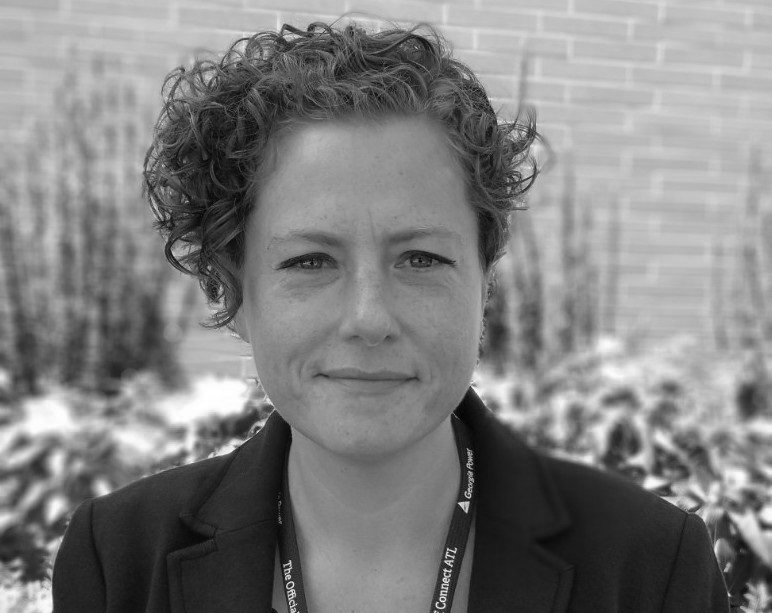
Renee Autumn Ray joined Hayden AI as senior director of global strategy in October last year. Before that she was strategy and innovation leader at Conduent Transportation. She is strongly plugged into the ITS establishment, with places on two committees of the Transportation Research Board. She is not, in short, the sort of person you’d expect to suffer from self-doubt. And yet…
“Honestly, in my first full-time tech role [at Conduent], I had a lot of impostor syndrome for about the first six months when I was like: ‘When they find out that I don’t know how to code software, it’ll be all over for me’.”
Yet Ray’s value is clear: an urban planner by background, she has spent much of her career in public service, at organisations such as Atlanta Regional Commission, the Centers for Disease Control and Prevention and the City of Tupelo, Mississippi.
Hayden AI is a California tech start-up which deals with public agencies and has to explain the value of its products to them. This is where Ray comes in. For instance, the company is installing hundreds of interior-mounted automated bus lane enforcement camera systems for New York Metropolitan Transportation Authority (MTA). But MTA probably isn’t that interested in the nuts and bolts of vision technology and data analytics.
“A platform is kind of a hard thing to describe and get your arms around and then make sense of, especially when I think a lot of agencies have fatigue with shiny objects,” Ray says.
“My role is to be a person who understands the industry that we’re selling into. I understand what a sales cycle looks like at a public agency.” Ray also knows what messages will resonate with an agency – and what ones will turn them off: “This is a product feature that will be useful to them and this product enhancement is not.” It’s a question, therefore, of “being able to describe something in plain language and clearly articulate why it’s useful”. She can explain to agencies how the tech will actually help them get their work done.
Different needs, different priorities
In her last government role, she was handed a technology project. “My leadership said: ‘This product is all wrong. We need to figure out and get to the bottom of it, because the vendor didn’t give us what we needed.’ So I read the scope of the contract and I came back to them and I said: ‘I’m afraid that the vendor did everything we asked him for. And I think there’s a mismatch in what you thought we’re going to get and what is possible for this technology to do. And it never could have fixed the problem that you wanted to fix.’”
Given the taxpayer dollars being invested in technology, Ray says: “I would like for that money to be spent in a useful way.” Once she switched to the tech side, she realised that there is frequently a gap between what a piece of technology does, how much the client understands it and how much they actually use it to benefit them. “So I just feel like there’s a lot of opportunity to do a better job.”

Being an urban planner was not something Ray had wanted to do from knee-high: “I had never heard of what urban planning was until I had been in the workforce for a couple of years after college. I majored in English literature and film criticism, and then I started looking for a job and I realised that if I wanted to make a living wage, I should find something else I was interested in.”
The epiphany came in Philadelphia. “It was the first time I lived in a city and I loved the experience of being able to walk places and have serendipitous moments of being on a public street and interacting with shop windows or people or buildings,” she recalls. “And so when I realised that urban planning was a job that people could have, I just never looked back. It’s about problem solving. And that’s something that really appeals to me.”
Ray did not think of herself as a changemaker. “I’m someone who likes being on a team and working with other people,” she says. “And so what I liked about urban planning is it’s incremental. Unless you’re [legendary New York urban planner] Robert Moses, you probably don’t imagine that you are all-powerful and can do everything. And so, to be successful, you need to be able to work with other people, understand that you’re coming into an existing environment, and you’re working with people that have different needs and different priorities, and that there are a lot of ways that you can be successful. But you’re only successful if you can work with those people and come up with a solution that benefits a lot of people. And that was just something that appealed to me.”
Working for the public good
That team of stakeholders in planning is certainly broad: “It’s elected officials, it’s different departments within city government, it’s community leaders, and then its residents, communities, citizens. It’s actually, in some cases, similar to technology because a city is a physical place: it has sewer lines, it has utility poles, it has regulatory policy in place. And so, thinking about technology, why is a piece of software helpful when a lot of the building of cities is very prosaic in terms of ‘Where does the concrete go? Am I fixing these potholes?’ Elected officials sometimes want to do really forward-thinking and progressive technology initiatives, but frequently residents will judge them on ‘Is my garbage getting picked up? Do I feel like my community is safe? Do my kids feel safe going to school?’ And so it’s a real marriage of technology and very basic, functional pieces of government.”
One occasionally hears pejorative talk from the private sector about the perceived inefficiency of the public sector; so what does Ray bring from her government experience into the tech world?
“That scorn for the public sector is one of my least favourite things about some people that work in the private sector,” she says firmly. “What I liked about working in government is you’re supposed to be working for the public good and you’re working on things that don’t make money, but that are for the good of the people. So if there were a market for clean water that could make a company a bunch of money, it probably would have been privatised. But you’re making an investment in a place and in a basic level of service that allows people to live and, hopefully, have a good quality of life.”

Her takeaway from government work, therefore, is a mission of creating something to enhance general wellbeing – but also understanding that there can be unintended consequences of policy choices. “So if you look at where we built urban highways in the US, there were conscious decisions about where to place this infrastructure that destroyed wealth for communities of colour and separated them,” she says. “And whether or not that was intentional, it had an outcome that was extremely negative. So when you’re building something new, you can’t only rely on our own experience and expertise and judgement. You need to be thinking about all of the potential risks and threats and who’s going to benefit from this and who might not benefit from this? Is this still a decision that we want to make?”
Taking a holistic view - who needs to be involved in the decision-making process – has really been of benefit in her move into the tech sector, she thinks. In much the same way as people only really notice government work when it goes wrong, so it is with technology. “I work for Hayden, we’re selling these cameras,” she begins. “If we do our job right, no-one really thinks about or cares about the cameras. They want to know about the video that we capture for agencies, and how the agencies can do their job better. So the fact that we have a great team of technologists that made this incredible, highly-accurate camera, we forget about it, because we’re focused on what comes out of it and how we can use it.”
Women in transportation
Ray is relatively upbeat about the current direction of travel when it comes to the diversification of the workforce in transport. “I do see a lot of opportunity for leadership diversifying,” she says. “And most of the women I know who are in leadership positions appreciate how they’ve benefited from having mentors - male or female - that helped them get to where they are. And they’re thinking about pulling other folks along with them. So for the most part, I’m very optimistic.”
A particularly positive aspect of the past five years is that people can articulate that ‘lived experience’ exists and is useful, she thinks. “And so a greater amount of people in the workplace, or at least in the transportation industry, understand that diversity is not just something that you need to have as window dressing, but it helps with problem solving,” Ray continues. “And it helps with the point I made before around the ‘unknown unknowns’ that are risks as we’re trying to solve a problem. If everyone around the table looks like me, I’m probably going to be missing something because the lived experience in the room is not very broad.”
Partly to this end, she has deliberately cultivated a diverse network of contacts. “I really don’t like the assumption that ‘well, we put out a job description and we just didn’t get a good pool of applicants and there’s a pipeline problem’,” she explains. “So I’m very intentional in having a network that’s as diverse as possible, with younger people, with women, people of colour, because I don’t want to feel as though the only people that I’m looking to learn from - or to network with, or to have conversations with - are all middle-class white women.”

This means she can recommend people for positions, and “can try to help ensure that my company or the communities I work for or work with, are becoming more diverse”. (For the record, Hayden AI has around 80 employees, 45% of whom are women).
Ray is active on social media and is often very funny when sharing personal experiences: has anyone in work ever come to her and said ‘that was a bit much’? Having avoided some hot water very early in her career, she has developed a golden rule for engagement. “I’ve always tried to say, would I be comfortable with my boss reading this tweet or looking even at this Facebook message?” she says. “Because you build relationships for your entire career.” She is an advocate of people getting active on platforms such as LinkedIn and is sorry to ‘watch Twitter burn’ at present, although she remains on it – for now. “I really loved Twitter for a long time because I used to work in transportation access for people with disabilities, so I learned a ton by finding disability advocates, following them, and just learning from them based on their tweets. So I learned a lot.”
Communication is key to her day job, not least in understanding how public agencies want to be spoken to – so does she start conversations with agencies by saying: ‘It’s alright, I used to be an urban planner’?
“No, I throw that in halfway through,” Ray smiles. “I find people like urban planners. Honestly, especially with agencies, they appreciate the fact that I used to work in government.”
So, going back to the beginning, what got Ray over the impostor syndrome stuff? How long did that take? “By six months, I had a better handle on who the other people in the industry were,” she laughs. “I thought: ‘You guys need me. I have a lot to offer’.”
And so she clearly does.





